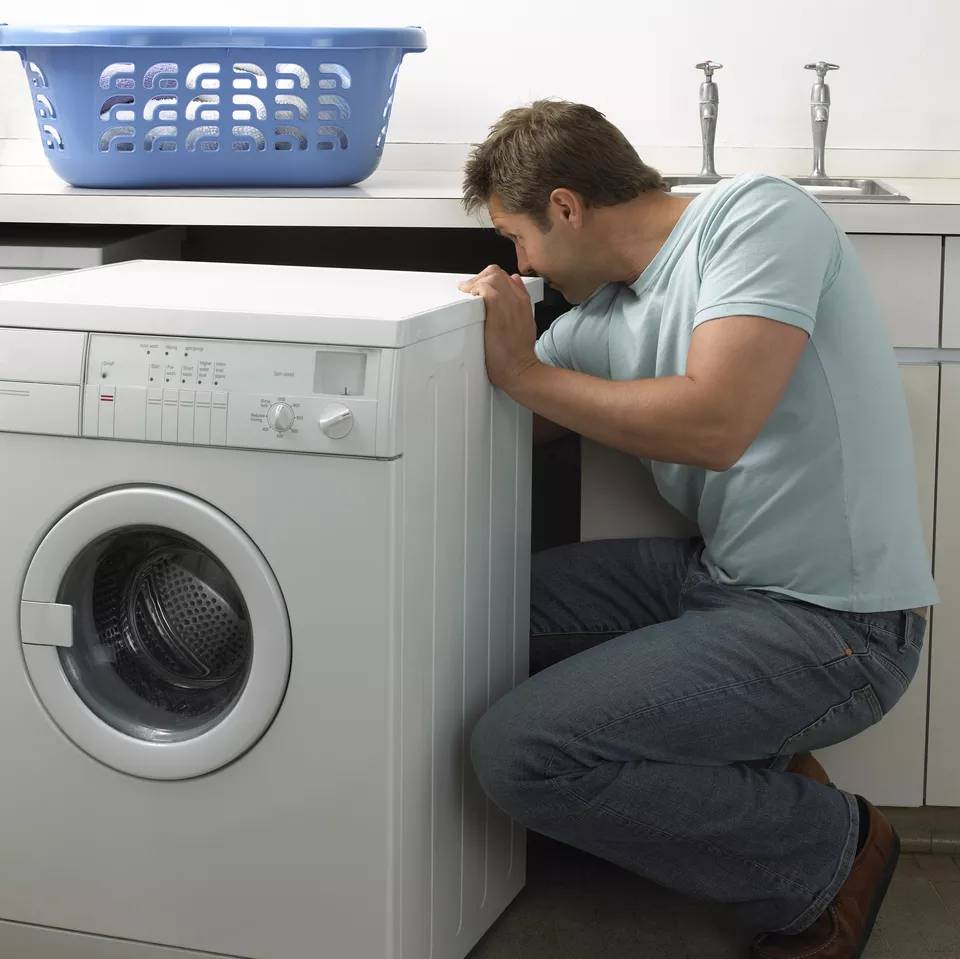
Washing machine repair may sound complicated, but these machines are pretty simple inside. With a few basic tools and the steps we show here, you can solve most problems yourself—and save the cost of a service call (€80 to €150). We won’t cover every fix, but the repairs we show will correct about 90 percent of washer troubles, like Maytag washer repair or Kenmore washer repair.
01 :- Washer Won’t Run.
It is the most basic of all washing machine breakdowns: the machine will not start. You have put the clothes in the washing machine basin, pressed the “ON” button or turned the dial, and then nothing happens.
- Check the power cord behind the washer to make sure that it is plugged in. Due to washers’ vigorous movements, especially when the load is imbalanced, machines may move. When a machine moves, it may inadvertently unplug the power cord. Cords that have been shortened with ties have no give. In this case, untie the cord to allow for more flexibility.
Washer Is Plugged in but Still Won’t Work
Once you’ve made sure the washer is properly plugged into the electrical outlet and it still won’t run, it’s time to check your central home electrical box to see if a fuse has blown or a circuit breaker has tripped.
You may be able to replace the fuse or turn the breaker back on. If this happens frequently, call an electrician immediately!
Washer Is Plugged In, Breakers Are Fine but It Still Won’t Work
Today’s washers, both front and top load models, require a lid switch to engage for the washer to work. These switches can break and have to be replaced. They can also just get “gunked up” with lint and detergent residue. Use a cotton swab and a bit of rubbing alcohol to clean the contact areas. You’ll be amazed.
02: Loud Noises
Terrible Noises
This often happens because the washer has been loaded improperly or the laundry has shifted during the cycle. For standard top load washers, never load clothing on just one side of the central agitator, distribute it evenly around the washer’s tub. For high efficiency top load washers with no central agitator, the problem can be overloading. In front load models, the noises can come if the machine is underloaded, and one heavy item is being flung around during the final spin.
If the thumping occurs during a cycle (usually the spin cycle), simply stop the machine and redistribute the wet clothing.
Weird Noises
Humming, clicking or gurgling can be caused by objects caught in the washer’s drum or internal mechanisms, clogged drains or internal sensors. Clicking or gurgling often signals an object caught in the water pump or drain line. These are easily accessed for cleaning (most front load washers have a little door near the bottom to check). You’ll probably find a button, coin or tiny toy inside. Another reminder to check pockets before loading clothes.
If your washer is making squealing or screeching noises, this indicates an internal mechanical problem that will require a service call.
Terrible Noises and Vibrates Wildly
If after rebalancing the load of wet clothes the washer is still noisy and vibrates, the washer is now off-balance. You must take steps to level the washer, or it will never be quiet and further damage can occur.
03: Slow Fill Or No Fill.
Replace the water valve
Remove the water valve bracket and mount the new valve. Transfer the electrical connectors to the Hot/Cold portions of the new valve. Then transfer the fill hose by compressing the spring clamp.
If your washing machine fills slowly or won’t fill at all, try cleaning the inlet screens on the water valve. To see how, type “inlet screen” in the search box above. If that doesn’t help, replace the entire water valve assembly ($35).